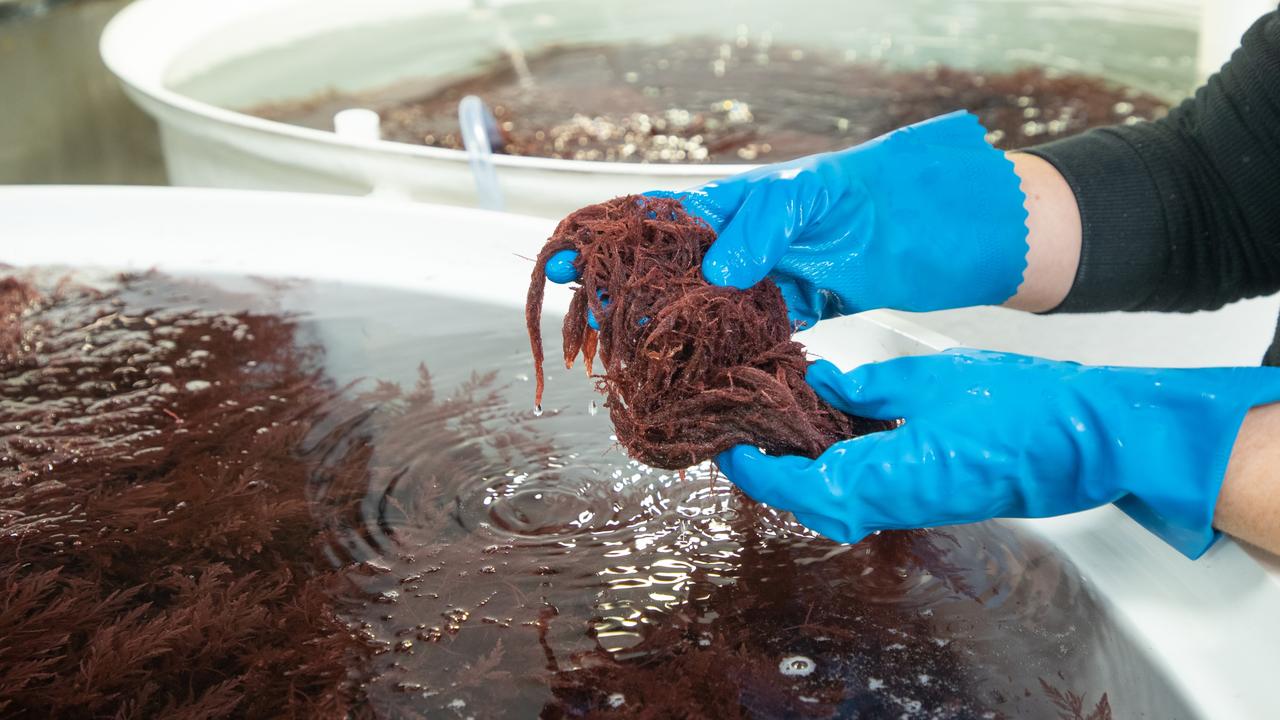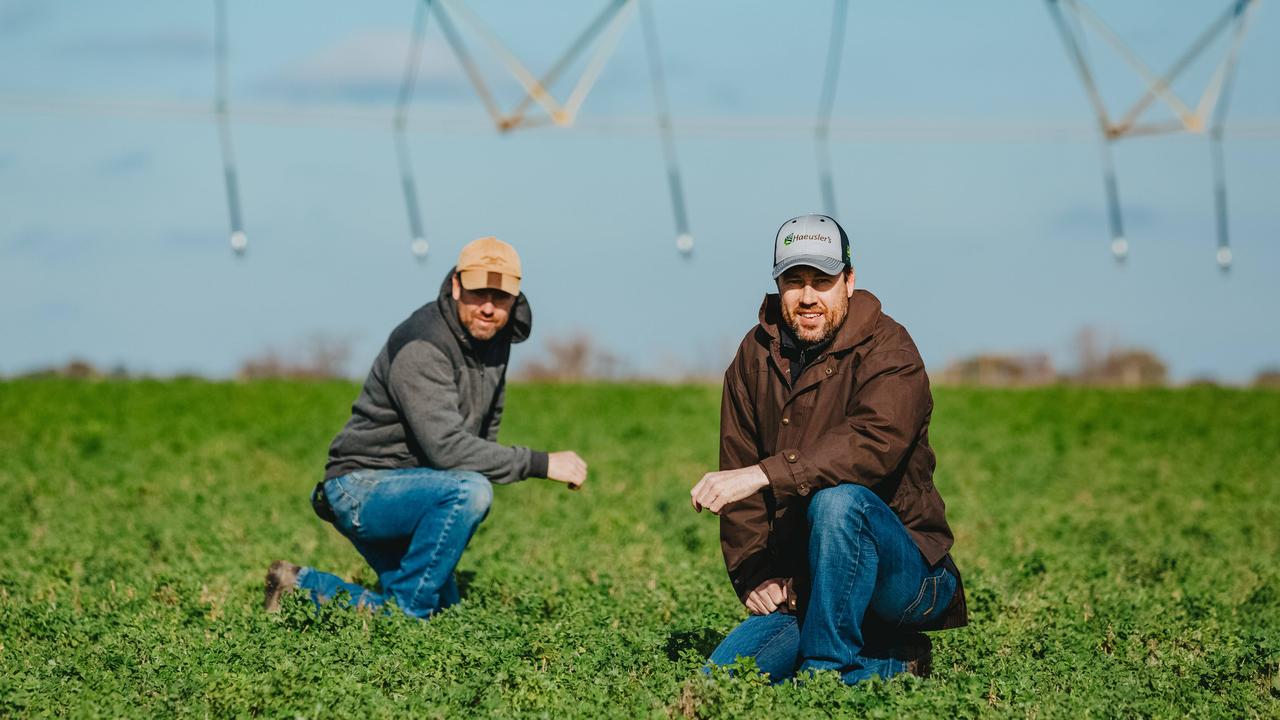Fair Game wild venison company puts harvested deer on the menu
Jonas Widjaja is introducing chefs and diners to wild-harvested venison to support farmers, relieve environmental stress and help feed Australia’s increasing hunger for “ethical” protein.

- Farm magazine
is available online as a digital edition
- Why it pays to subscribe to The Weekly Times+
SIMILAR to most farmers and hunters, Jonas Widjaja can’t stomach the idea of killing an animal to waste it.
The New Zealand native sees Australia’s massive herd of free-range wild deer as pests with massive potential.
“We have this really big problem in terms of food security, and then we kill animals and leave them on the ground, it just doesn’t make any sense,” says the 37-year-old father of two, laying bare the stark reality of deer control measures.

Australia’s wild deer populations increase and spread so rapidly, hunting alone can’t keep numbers steady. Aerial culls happen in some government-managed landscapes. On farms, hunters are often asked to kill more animals than they can eat, to protect farmland and precious pasture.
After the summer’s devastating bushfires, control of Australia’s six introduced deer species – fallow, red, chital, hog, rusa and sambar – is a hot topic due to the fragile state of the landscape and ecological balance. First released for sport shooting in the 1800s, deer breed unabated, destroy young trees, spread weeds and compete with livestock and native wildlife for food.
“In coming to NSW, I learnt that the feral deer population and problem here is really huge in terms of environmental impact,” says Jonas, who moved from Auckland to NSW with his Australian wife, Mindy Greenwood, about five years ago. “But it’s also a huge problem for farmers who have to deal with the pests on their properties.”
Particularly in drought-hit regions, farmers often call in shooters or cull themselves.
“Hunters going on to a property, they just want to fill their freezers,” Jonas says, “but the number of deer that they are being asked to remove far outweighs what they are capable of eating. The result is these hunters have to leave them on the ground.”
Currently, pet-food manufacturers and export companies buy deer from licensed commercial shooters. But Jonas believes the animals could feed people, not just pets.
In March last year, he set up a processing facility and founded a company called Fair Game, which sources wild-harvested deer and sells venison and deer products to restaurants and households. His main aim is to help farmers control the introduced species without wasting the resources the animals can provide.
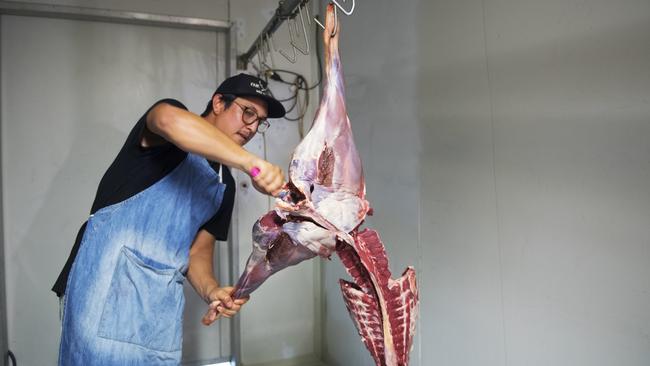
JONAS runs the business from his small property near Lismore, in the NSW north coast hinterland, where he lives with Mindy and their two sons, Arlo and Luka. The young family moved to the Northern Rivers to be near Mindy’s parents, Jim and Christine. Jonas is a keen shooter; one of thousands across southeast Australia. He hunts to bag wild deer as an ethical source of meat for his family’s personal consumption.
“The Fair Game concept started while I was still in New Zealand, about seven years ago,” says Jonas, explaining that he used to eat at an Auckland restaurant that hunted for the wild meat on its menu, served it with a nose-to-tail ethos and donated any excess harvested meat.
From then, he started dreaming about how he could expand the idea beyond just one restaurant.
After moving to NSW, a frustrating incident following a hunting trip was the push he needed to launch his business. He came home with too much deer to fit in his freezer and tried to donate the extra to a Lismore food charity. Despite a short supply of protein, the soup kitchen had to turn down his offer.
“Not only did it (the meat) have to go through a butcher, it had to go through a game-meat processing facility,” says the former school teacher. “And the game processing facility couldn’t take it unless it had been harvested by a licensed harvester.”
Jonas packed in his education career to launch Fair Game, investing in second-hand equipment to get things up and running.
Using a nose-to-tail philosophy, Jonas sells everything from steaks and mince to whole deer and tanned hides.
“Everything that comes to me, I’m creating a market for it and I like to refer to me selling deer rather than selling venison only,” says Jonas, who can’t sell deer that he shoots, but instead buys about 16 whole deer a week from six licensed commercial harvesters. The shooters hunt on properties across northwest NSW.
“I encourage whole-deer buying,” Jonas says. “The consumer can save money and experience the variety of amazing cuts that deer offer. It’s a nose-to-tail offering and a supportive way to buy as well, since the producer isn’t left with difficult cuts to move. Some buyers share a deer between families. I pack it in a way that it is easily divided.”

WHILE he’s determined to make Fair Game work, Jonas says setting up the business has been a financial stretch.
“You have to move a large number of animals to break even,” he says. “I really want to make it work and I wouldn’t allow myself to give up, but there have been some major hurdles.”
While second-hand equipment is affordable, it’s prone to break down, mounting unforeseen costs. When his refrigeration conked out not so long ago, a batch of deer had to be thrown away.
“It was gutting,” Jonas says.
“I’m still throwing money at it, with a deadline that it needs to be profitable.
“I’m at that point now where a good cash injection to upgrade a lot of things would really increase efficiency and give me more time to focus on sales.”
I wouldn’t allow myself to give up, but there have been some major hurdles.
On the upside, his family including sons Arlo, 5, and Luka, 7, as well as Mindy’s parents, Christine and Jim Greenwood, have been a willing and enthusiastic workforce.
“Grandma is a legend and comes and helps pack things … and Pops often will do the drive out west to pick up the produce,” Jonas says.
His customer base is growing steadily.
“I have a number of customers who identify as vegetarian who will eat my stuff because there is no live transport,” he says, explaining the deer are culled regardless. “The fact it doesn’t go through an abattoir is a big thing for many people.”
Balancing consumer expectations with farmers’ needs takes ongoing effort.
“There is an ideal weight in terms of flavour and tenderness, but if you start putting restrictions on the animals to target, then the actual problem for farmers isn’t being solved in the best way, and they may resort to other options,” he says. “Whatever the weight the harvesters bring, I will buy it.”

FARMER Eddie Voss runs sheep and cattle on about 400 hectares in northern NSW, south of Texas. When grazing pressure mounts, he welcomes hunters to control feral animals.
“I have practically destocked, like a lot of blokes around here now, so it doesn’t matter much. But 12 months ago, the deer were starting to be competitive,” he says. explaining the grazing deer were leaving little feed for his stock. “So I was starting to get a couple of blokes out to shoot them.
“I didn’t want them eradicated. I’m one of those blokes that doesn’t mind seeing a few deer about. But from a commercial point of view, you have to control the numbers.”
Eddie believes partnerships with licensed harvesters have a number of benefits.
“They will ring you before you come … they shut the gates and all that sort of stuff,” he says. “And they harvest them humanely. To me, that is a big plus.”
To keep their harvesting licence, shooters must pass a stringent marksmanship accuracy test, kill animals with a single shot to the head, gut and clean carcasses in the field and transport them to a cold box under strict time and temperature rules.
Eddie is pragmatic about the deer that survive on his scraps of remaining pasture.
“All our animals are resources,” he says. “I really don’t think we in Australia use our wild animals resourcefully enough. That is why I’m against the helicopter shooting, because they don’t do anything with them. I think that is so terribly wrong.
“What Jonas does, as far as I’m concerned, that is a really good thing because he is utilising all the animal.”
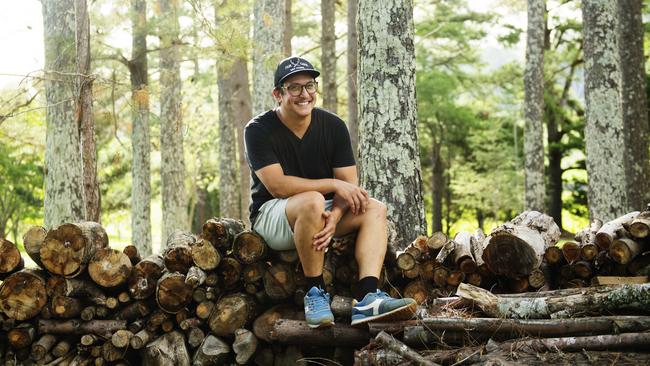
JONAS knows selling 16 deer a week is not going to make a dent in the massive national herd, however he hopes it will show how the problematic species can be used, rather than culled and wasted.
“A major focus I have is the food security for our future,” says Jonas, who donates to local charities when he can.
“The wasted meat really bugs me. The reason it bugs me is not because the restaurants should cook it, it is that there are people who need protein but can’t access it … meanwhile we have a healthy and nutrient-dense product being culled.
“I encourage farmers and landholders to use certified field harvesters who are able to sell that meat for human consumption.”
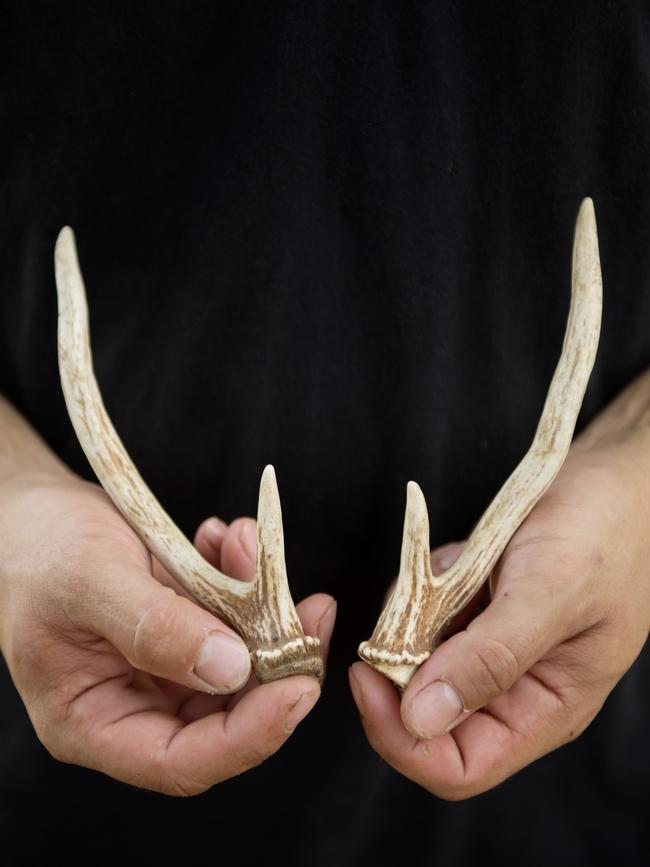
PEST POTENTIAL
THERE are thought to be more than one million deer in Victoria alone. Deer distribution in NSW spread from 8 per cent of the state in 2009, to 17 per cent in 2016. But Barry Howlett of the Australian Deer Association says the overall number is inconsequential, it is local numbers and how to best control them that are important.
“Solutions for control are not always straight forward,” he says. “It is understanding what you are trying to achieve and the area you are in.
“Most hunters abhor the idea of shoot to waste. And so do most farmers.
“If you have local people having positive impacts locally, then replicate that across the state, you are on a winner.”
Allan Parker is one of the licensed harvesters who hunts across NSW and supplies Jonas.
Allan is also certified as a game meat processor, allowing Jonas to employ his services to skin the deer and check for disease before Jonas collects carcasses weekly.
Jonas breaks down the carcasses at Lismore, creating bespoke cuts for chefs and meat boxes for home delivery. What meat isn’t sold fresh goes into smallgoods, made in collaboration with Salumi Australia.
Allan believes Jonas’s business plan can boost rural economies.
“It creates jobs for people,” says the 41-year-old. “With the drought, people can still go out and try to make a living by trying to keep the feral animal populations down. I think it is great, because it’s a great source of protein.”

TASTE TEST: RETHINK VENISON
JONAS says venison’s taste is not strong and gamy, as many expect.
“The chital deer is a very delicate meat, extremely tender and the depth of flavour is really light,” Jonas says.
“The fallow deer has a bit of a deeper flavour and they also put more fat on where there is good feed. And the red deer are a lot stronger, generally a lot bigger, and the game taste starts to come out.”
More info: fairgame.com.au


